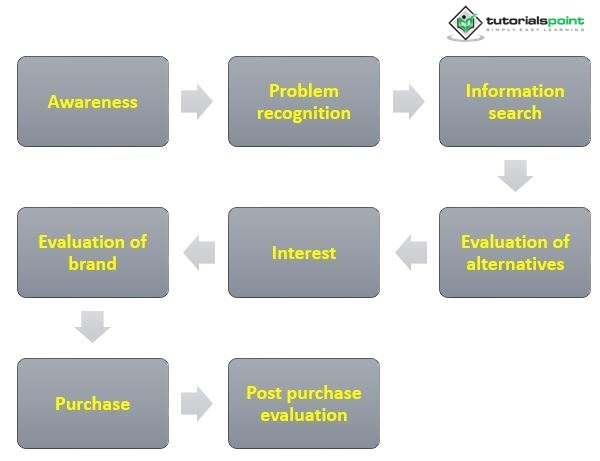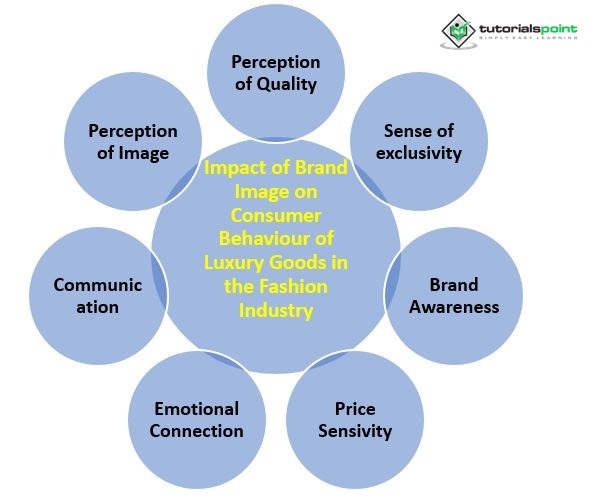

The impact of brand image on consumer behaviour in the luxury fashion industry is significant. A strong brand image can influence consumer perceptions, purchasing decisions, and overall brand loyalty. As such, it is important for luxury fashion brands to invest in creating and maintaining a strong brand image in order to remain competitive in the market.

Brand image refers to the perception that consumers have of a brand and includes the emotional, functional, and symbolic associations that are linked to it. It is the overall perception that people have of a brand based on their experiences, perceptions, and knowledge of the brand. Brand image can be created through various touchpoints such as advertising, packaging, product design, and customer service. It is the result of all the interactions that a consumer has with a brand, including their perception of the brand's products, services, and reputation.
Brand image can have a significant impact on consumer behaviour and purchasing decisions, as consumers often choose products and services based on their perception of the brand. By creating a strong and positive brand image, companies can differentiate themselves from competitors, build customer trust and loyalty, and ultimately increase sales and profitability.
Consumer behaviour refers to the actions and decisions made by individuals or groups when purchasing, using, and disposing of products and services. It involves the study of how consumers perceive, evaluate, and make choices about products and services, as well as the factors that influence their behaviour. Consumer behaviour encompasses a wide range of activities, including product research, brand evaluation, purchase decision-making, and post-purchase evaluation. It is influenced by various internal and external factors, such as personal and demographic factors, cultural and social influences, and marketing strategies.
The study of consumer behaviour is important for businesses, as it helps them to better understand and predict consumer behaviour and to develop marketing strategies that are more effective and appealing to consumers. By understanding consumer behaviour, companies can design products and services that better meet consumer needs, create targeted marketing campaigns, and improve the customer experience.
For luxury fashion goods, the consumer behaviour model may include the following stages

Awareness − In this stage, the consumer becomes aware of the brand and its product.
Problem recognition − In this stage, the consumer becomes aware of a need or want that can be fulfilled by a product or service.
Information search − In this stage, the consumer seeks information about the product or service that can meet their need or want.
Evaluation of alternatives − In this stage, the consumer evaluates the different options available, considering factors such as quality, price, and features.
Interest − In this stage, the consumer begins to take an interest in any brand and its products and may research the brand and its offerings.
Evaluation − In this stage, the consumer evaluates the brand and its products based on various factors, such as quality, reputation, price, and style.
Purchase − In this stage, the consumer makes a purchasing decision based on the evaluation performed in the previous stage.
Post-purchase Evaluation − In this stage, the consumer evaluates their overall experience with the brand and its products and determines whether they will make a repeat purchase in the future.
For luxury fashion goods, the decision-making process may also be influenced by various external factors, such as social and cultural influences, personal values, and status. In addition, brand image and reputation are also important considerations for consumers when making a purchasing decision.
In conclusion, the consumer behaviour model for luxury fashion goods is a complex process that involves various stages and factors, including personal and external influences, brand image and reputation, and post-purchase evaluation. By understanding this model, luxury fashion brands can develop marketing strategies that better target and appeal to their customers.
A brand concept is the central idea or message that a brand wants to communicate to its target audience. It defines the brand's personality and values and sets it apart from its competitors. A brand concept can be communicated through various elements, such as logos, slogans, taglines, packaging, advertising, and customer experiences. By developing a clear and consistent brand concept, businesses can create a strong and easily recognisable brand identity that differentiates them from their competitors. It includes the following

Brand equity refers to the value that a brand adds to a product or service beyond its functional features. It is the additional value that a consumer perceives from a brand's name, reputation, and other intangible elements, such as the brand's history, quality, and reputation.
Brand management is the process of creating, maintaining, and improving a brand's reputation, image, and overall value. It involves various activities such as market research, product development, pricing, packaging, advertising, and customer service, with the goal of creating a consistent brand experience and building strong relationships with customers.
Brand awareness refers to the degree to which customers recognise and recall a brand. It is a measure of how familiar customers are with a brand and its products or services. High brand awareness is important because it helps to build brand recognition, increase customer loyalty, and drive sales.
Brand loyalty refers to a consumer's repeated purchase of the same brand or product over time. It is a measure of the strength of the emotional and psychological connection a customer has with a brand. In short, brand loyalty is a key measure of a brand's success, and companies invest significant resources into building and maintaining customer loyalty through effective brand management strategies.
Brand image plays a significant role in shaping consumer behaviour in the luxury fashion industry. Some of the impacts of brand image on consumer behaviour in the luxury fashion industry include

Perception of Quality − A strong brand image can create a perception of high quality among consumers, which can influence their purchasing decisions and increase brand loyalty.
Sense of exclusivity − Luxury fashion brands often cultivate a sense of exclusivity around their products, which can appeal to consumers who want to be seen as unique and fashionable.
Brand Awareness − A strong brand image helps increase brand awareness, making it easier for consumers to recognize and choose luxury fashion products.
Price Sensitivity − In the luxury fashion industry, consumers often associate high prices with high quality, which can reduce their sensitivity to price and increase their willingness to pay more for a luxury product.
Emotional Connection − A strong brand image can create an emotional connection between consumers and the brand, which can lead to increased brand loyalty and repeat purchases.
Communication − Another important aspect of brand image is the way it is communicated to consumers. Luxury fashion brands often use advertising, social media, and events to create and maintain a strong brand image. For example, advertising campaigns that feature high-end models and celebrities can create a sense of prestige and exclusivity around a brand's products, which can increase consumer interest and sales.
Perception of Image − Brand image can also impact the way consumers perceive a brand's overall image, such as its reputation, quality, and reliability. A strong brand image can increase consumer trust, leading to repeat purchases and positive word-of-mouth referrals. For example, a brand that is associated with style and luxury may have more influence over a consumer's decision to buy a high-end handbag than a brand that is not as well known.
In conclusion, brand image plays a crucial role in shaping consumer behaviour in the luxury fashion industry. A strong brand image can influence consumers' perceptions of quality, create a sense of exclusivity, increase brand awareness, and lead to increased brand loyalty.
Finally, brand image has a significant impact on luxury fashion goods consumer behaviour. Consumers of luxury fashion goods place a high value on the image and reputation of the brand and use this image to make purchasing decisions. By creating a strong brand concept and consistently communicating it through various elements, businesses can build a positive brand image that appeals to their target audience and drives sales. Understanding the importance of brand image and how it influences consumer behaviour is crucial for businesses operating in the luxury fashion industry to be successful.